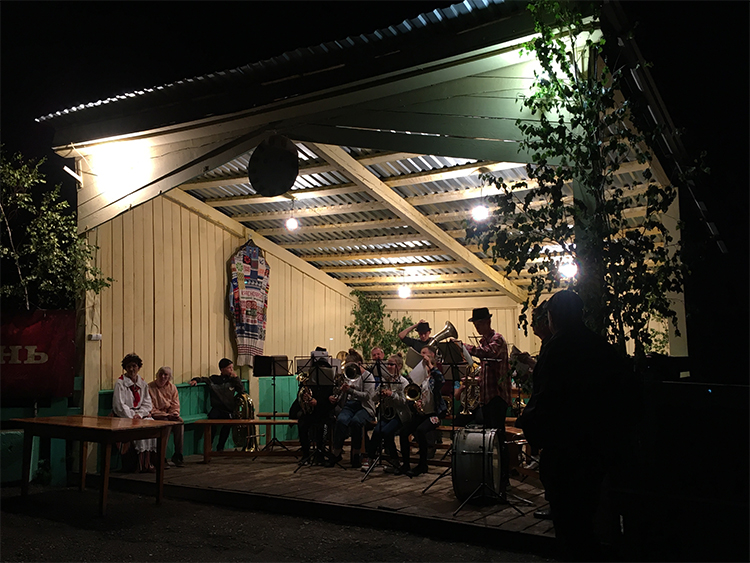Marin Mõttus, Keit Spiegel: Estonia is much bigger than Estonia
Many Estonians living abroad want to participate in Estonian life and are ready to contribute to the future of Estonia through active citizen diplomacy. For its part, the state considers it important to support and acknowledge initiatives that would help preserve and strengthen the Estonian identity abroad, write Marin Mõttus, Ambassador at Large for the Diaspora of the Ministry of Foreign Affairs, and Keit Spiegel, Adviser for the Diaspora at the Ministry of Foreign Affairs.
Thinking back to the restoration of independence of Estonia 30 years ago, we must be grateful to the Estonian communities in the United States, Canada, and European countries. Estonians living abroad are still the keepers and carriers of the Estonian diaspora, the shapers of the good reputation and progressive image of Estonia, and valuable cooperation partners in various fields. Keeping and developing the global Estonian diaspora is a priority for the Estonian state: the more people link their future to Estonia in one way or another, the more we can achieve.
It is estimated that up to 200,000 people with Estonian roots live around the world today. Longer-established and larger communities of people of Estonian descent can be found in North America, Sweden, and elsewhere in Europe. However, the beginning of this century has seen a particularly rapid growth of Estonian communities in countries such as Australia, Finland, and Belgium. Estonian can also be heard in more exotic countries – from Honduras to Oman and from Iceland to El Salvador. Here is a glimpse of the Estonian diaspora in Siberia and Canada – far east and ever even further west.
The Estonian diaspora in Siberia endures
Many may know that the Estonian diaspora in Russia emerged in the mid-nineteenth century as a result of the first wave of emigration. The emigration of Estonians to the east at that time was mainly for economic reasons, but people also moved there to study, especially at Saint Petersburg State University.
This means that in Siberia, the Estonian diaspora has been kept and carried from generation to generation for more than 170 years: this is how old the oldest Estonian villages there are. One example is the village of Ülem-Suetuk (Upper Suetuk) with 150 inhabitants, which is located in a picturesque region with lush nature, somewhat reminiscent of southern Estonia, about half a thousand kilometres from Krasnoyarsk.
We visited the Estonian community of Suetuk around Midsummer Day this year. Walking around the village and talking to people, it was amazing to hear how well the middle and older generation spoke Estonian – even though it was a bit archaic, they had no accents.
Just like in Estonia, Midsummer Day is one of the most important events of the year in the village. It is celebrated two weeks later than in Estonia, but they also make massive bonfires, sing, and dance. A local brass band that is over 120 years old plays music.

Foto: Ülem-Suetuki küla Siberis
The cornerstone of the Estonian diaspora is the local Ülem-Suetuki school, where Estonian is taught with the support of the Estonian state. Airi Lauri has been teaching Estonian there for 20 years. Estonian as the language of the local minority is a compulsory subject for all children, including children of non-Estonian origin. The school hopes to find an Estonian-speaking volunteer in Suetuki village for a couple of months to work with children and young people outside school hours.

Foto: Eesti jaanituli kohaliku pasunakoori kontserdiga
Estonians in Canada
The Estonian diaspora also has a long and colourful history in Canada. At the end of the nineteenth century, Estonians also began to migrate across the ocean to the west in the hope of getting land. By the turn of the century, there were as many as seven Estonian settlements in Alberta, Canada. After the Second World War, a large number of Estonian refugees settled in Canada – a large, active Estonian community developed. The Estonian diaspora was and is sustained by Sunday schools and congregations, and the Estonian language and spirit are passed on to young people through the tradition of scouting.
The Estonian community in Canada has been one of the most politically active organisations alongside Estonian organisations in the United States, consistently calling for an end to the Soviet occupation of the Baltic countries. Since the restoration of independence, several worthwhile initiatives have been launched in Canada that have helped to strengthen communication and understanding between Estonians living abroad and Estonians living in Estonia.
The most famous landmark of the Estonian diaspora in Canada is Tartu College, located at the heart of Toronto, which has become a cultural, community, and memory centre of sorts. However, Estonians in Canada want to achieve even more: in the coming years, the International Estonian Centre is to be built in downtown Toronto, with a concert hall and art galleries, as well as space for business meetings, an Estonian school, cultural[1] collectives, and an archive.
Together, we can make Estonia bigger
Many Estonians living abroad want to participate in Estonian life and are ready to contribute to the future of Estonia through active citizen diplomacy. For its part, the state considers it important to support and recognise initiatives that would help preserve and strengthen the Estonian diaspora abroad.
One of the most important areas is Estonian language teaching – schools, kindergartens, digital solutions, and our virtual Global School, where 250 children from all over the world are taught in Estonian. In addition, Estonian language and culture camps for young Estonians from abroad have been held in Estonia for years. The state has been investing in these activities for years, but there is still room for improvement. The better we know the needs and problems of our compatriots, the better we can target resources and the more they can benefit from our support.
Anyone who has seen ‘Tuljak’ performed by a Turkish-Estonian folk dance group in Ankara or heard Estonian choral singing in Luxembourg knowns that culture and common events are key to the survival of Estonian life. It is possible to apply for state support for self-initiated projects of foreign communities until the end of November. In 2022, it will also be possible to apply for support for Estonian cultural associations and Estonian-language publications. Information on all of these opportunities can be found on the Global Estonian portal and on the websites of the Ministry of Foreign Affairs and the Integration Foundation.
Coming together via screens
Congregations in foreign communities are also important: in addition to the religious aspect, they help to preserve the national identity through Estonian-language publishing, Estonian-language religious services, choirs, and language teaching in Sunday schools.
Many Estonians are successful and influential members of the business community in their home country. Their close links with Estonian entrepreneurs could be mutually beneficial, which is why we plan to create advisory and communication environments and organise online meetings. For young people with Estonian roots, the state has offered opportunities to continue their education in our vocational schools and universities; soon, this will be complemented by support for traineeships in Estonian companies or institutions.
If you want to return to Estonia for good, ask the Integration Foundation for advice on finding a job, putting your children to school, and other such issues.
Every year, on the last weekend of November, we celebrate the Global Estonian Day. This year, it was just after Citizens’ Day, which is symbolic in its own way. The Ministry of Foreign Affairs organised a virtual forum for Estonians from all over the world on Saturday, 27 November, where they came together via screens and discussed everything that was on their minds. The forum can be watched with simultaneous translation in Estonian, English, and Russian.



